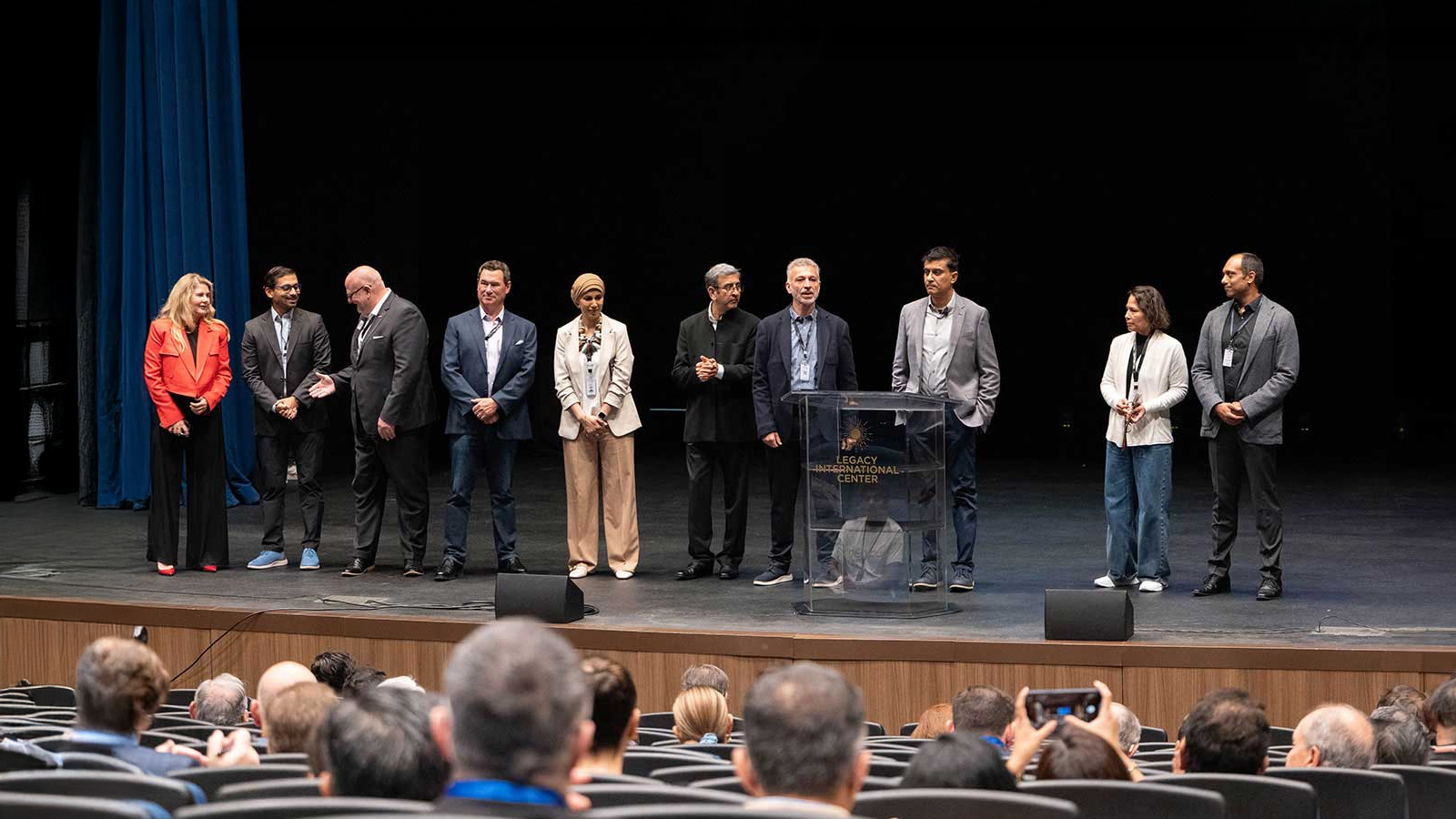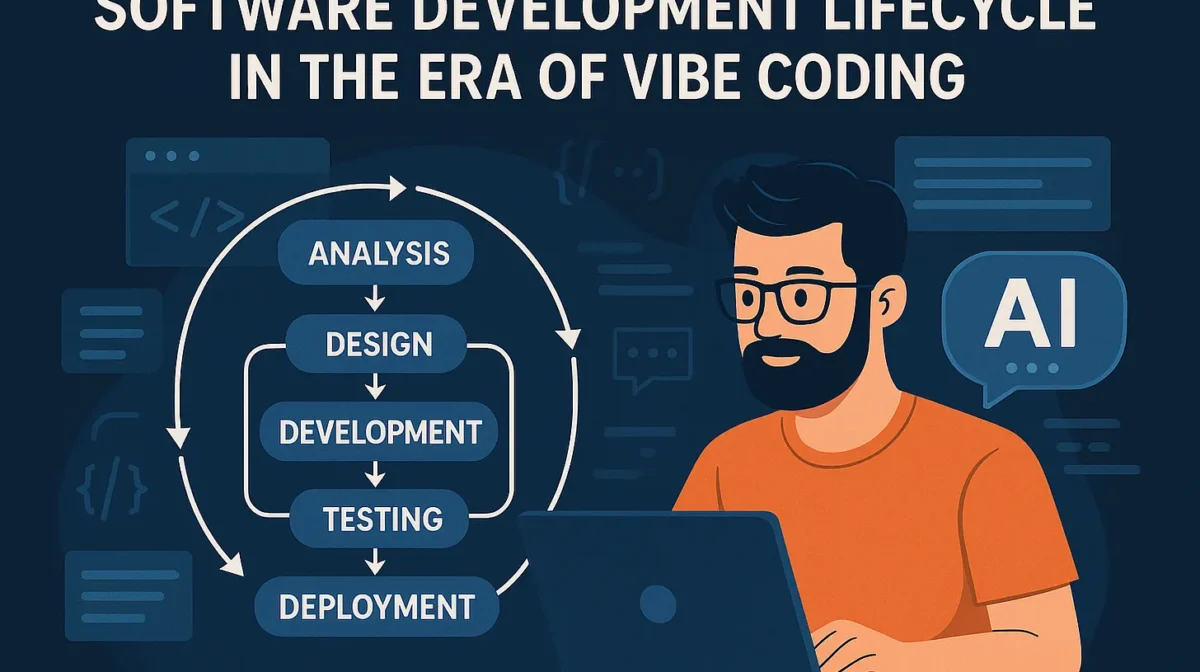
Software Development Lifecycle in The Era of Vibe Coding
In the not-so-distant past, creating a software product could take months or even years of work. However, now it’s just a matter of a few hours, thanks to the emergence of “vibe coding”.
Did you know about indie developer Pieter Levels, who created a viral flight simulator in just 3 hours using Cursor? He used simple natural language prompts to build the simulator, which earns him $57,000 per month.
Similarly, a journalist with no coding experience built two retro-style games, including a rudimentary version of “Meatball Mania.” It took him about 40 minutes and a few prompts in AI tools, such as Anthropic’s Claude, to develop the games.
The software development lifecycle (SDLC) is undergoing a significant transformation with the emerging use of vibe coding. Therefore, we have created this guide to walk you through what the SDLC will look like in the era of vibe coding we are entering.
Historical Evolution of Software Development Lifecycle
The software development lifecycle has never been static. It has adapted with each era of technological advancement and organizational demand. There was a time when software development was based on sequential processes with little room for change or iteration. However, this shifted to iterative development models, prioritizing adaptability and continuous feedback.
Before discussing SDLC in the era of DevOps, we must understand how SDLC has evolved over time and then align those patterns with emerging trends.
Waterfall (1960s-1990s)
The main phases of Waterfall development included:
- Requirements gathering and analysis
- System design
- Implementation and testing
- Maintenance
Each of the above phases had to be completed before the next could begin. This model remained a popular approach to software development during the 1960s-1990s era, as the mindset at that time prioritized predictability and control within a structured environment. However, it lacked room for adaptability, feedback, and iteration.
Agile & DevOps (2000s-Present)
Agile introduced iterative development, collaboration, early delivery, and continuous feedback and improvement as core principles. It enabled software teams to adapt to changing requirements mid-project through sprint-based development.
For example, a mobile app development team working on a fitness tracker can release a basic version in the first sprint. Then, it can collect user feedback and add advanced features in later sprints, such as heart rate monitoring and workout logging. After each sprint, they share the usable version with users, gather feedback, and update their approach.
In short, Agile methodologies transformed software development from a linear, one-time delivery process to a feedback-driven cycle.
Shortly after Agile, DevOps emerged as a complementary evolution. It bridged the traditional gap between development and IT operations. It enabled continuous integration and continuous delivery (CI/CD), as well as infrastructure automation. This optimized feedback loop allows for faster development, testing, and deployment of software products.

Lean & Hybrid Models
After software firms became mature in their Agile and DevOps journeys, many adopted Lean principles and hybrid models. Lean, rooted in manufacturing, brought an intense focus on delivering value and reducing waste. Its core tenets include:
- Identify value elements from the customer’s point of view.
- Understand the end-to-end process of providing value to identify areas for improvement.
- Ensure continuous flow in the development process.
- Remove work from the development process that doesn’t align with customer interests.
- Ensure a culture of constant improvement.
The adoption of lean principles has enabled software companies to improve quality, reduce costs, and accelerate time to market.
Moreover, hybrid models have been developed to overcome the limits of using a single approach across different teams and products. These models combine elements of Agile, Lean, and Waterfall to create adaptable and organized workflows. For example, an organization might use Agile methods for quick feature releases and depend on Waterfall for documentation to meet regulatory standards.
Hybrid frameworks, such as SAFe (Scaled Agile Framework) and Disciplined Agile Delivery (DAD), have also emerged to strike a balance between agility and governance in large enterprises. This way, large enterprises could adopt agility without sacrificing governance and control.
Tools and Technologies
As the software development lifecycle evolved with time, the tools and technologies also advanced. Popular among them in the software world include:
1. Version Control Systems
Version control systems help developers track, manage, and log changes to source code over time. They allow multiple team members to collaborate on the same codebase without overwriting each other’s work. Common version control systems include Git, Subversion (SVN), and Mercurial.
2. Project Management Tools
Project management tools facilitate the planning, tracking, and coordination of software development tasks across teams. They improve visibility into workflows, prioritize tasks, help manage deadlines, and much more. Commonly used tools in this category include JIRA, Trello, Asana, and ClickUp.
3. Automated Testing Frameworks
Automated testing frameworks enable developers to create scripts that automatically verify the functionality and reliability of code. These tools lessen the need for manual testing and help identify bugs early in development. Popular frameworks include Selenium, JUnit, TestNG, and Cypress.
4. Deployment and Monitoring Tools
Deployment tools automate the release of software to different environments; similarly, monitoring tools track system performance and anomalies to maintain the health of applications after deployment. Widely used tools in this space include Jenkins, Docker, Kubernetes, Prometheus, Grafana, and New Relic.
The Rise of Vibe Coding
Every generation of developers has undergone a transformative shift. The Waterfall model introduced structure and clarity to the software development life cycle (SDLC). Then, Agile revolutionized the process by speeding up feedback loops. After that, DevOps integrated development with operations.
Currently, the new generation of developers is experiencing a rising paradigm, known as vibe coding, where AI becomes an essential part of every phase of software development.
What is Vibe Coding?
Vibe coding is a software development method that leverages AI, particularly large language models (LLMs). It turns the instructions from plain language prompts into working code.
Developers specify the code they want to generate, including the necessary features. For example, they might write a prompt such as:
- “Create a mobile-friendly to-do list app with dark mode and local storage support in JavaScript.”
- “Develop a trivia quiz game using React where users answer multiple-choice questions across different categories. Include a timer for each question, a score summary at the end, and an option to restart the game.”
After providing the prompt, the AI interprets the instructions and creates the necessary code components. Developers can also write follow-up prompts to improve the AI’s outputs.
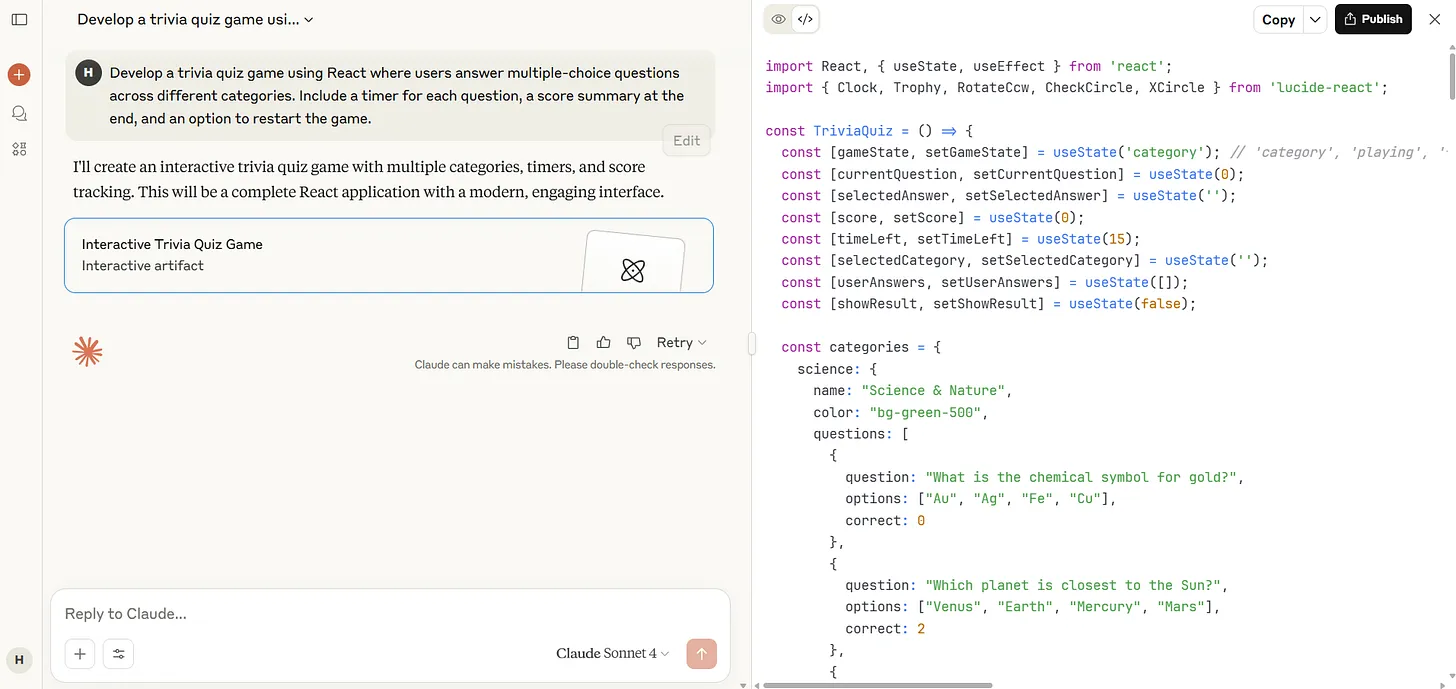
Simply put, vibe coding removes the need to write code line by line and turns software development into a prompt-based interaction between humans and AI. The developer’s role shifts from manual coder to creative director.
Real-World Applications of Vibe Coding
Vibe coding has diverse real-world applications across industries, including web development, mobile apps, blockchain, IoT, healthcare, and more. Below is a quick overview of real-world use cases of vibe coding.
1. Web and Mobile Apps
Developers and individuals are utilizing natural-language prompts to create personalized websites and mobile applications. They can specify layouts, features, styles, and even user interactions, such as “Build a mobile app for tracking fitness goals with dark mode and push notifications”, and the AI handles the code generation. For example, ttyl is a fun mobile app created with Cursor and lets users send voice memos to their future selves.
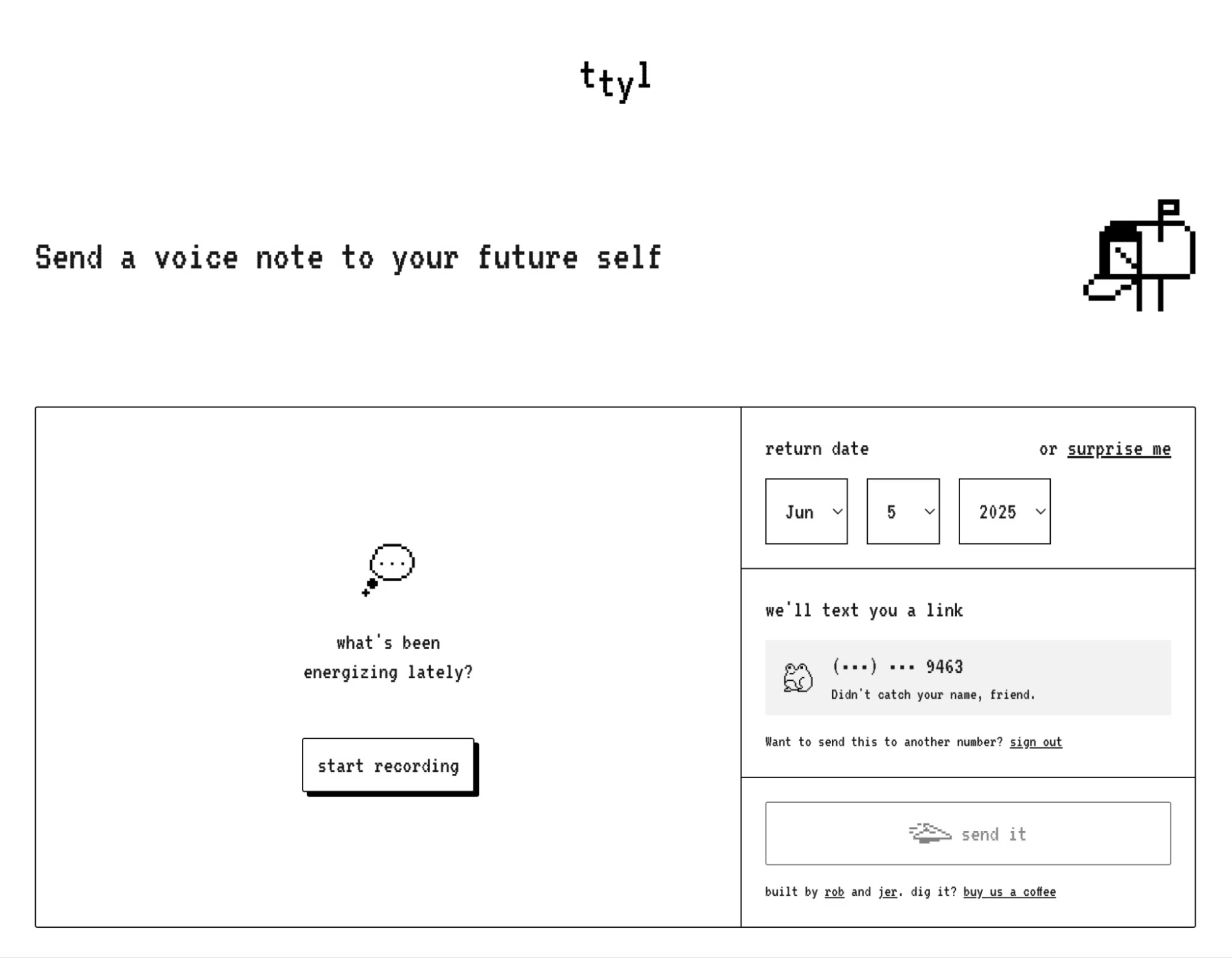
2. Gaming and Entertainment
Startups are using vibe coding to create playable games in days rather than months. Developers describe mechanics, environments, characters, and other details in plain language to generate executable code, such as “Create a 2D platformer with destructible terrain and boss battles.”
For example, The Great Taxi Assignment is a 3D retro taxi simulator developed in under 48 hours using AI tools and won first place at the Vibe Coding Game Jam. The developer explained gameplay mechanics and visual style to the AI, which generated code for driving physics, city creation, UI, and more.
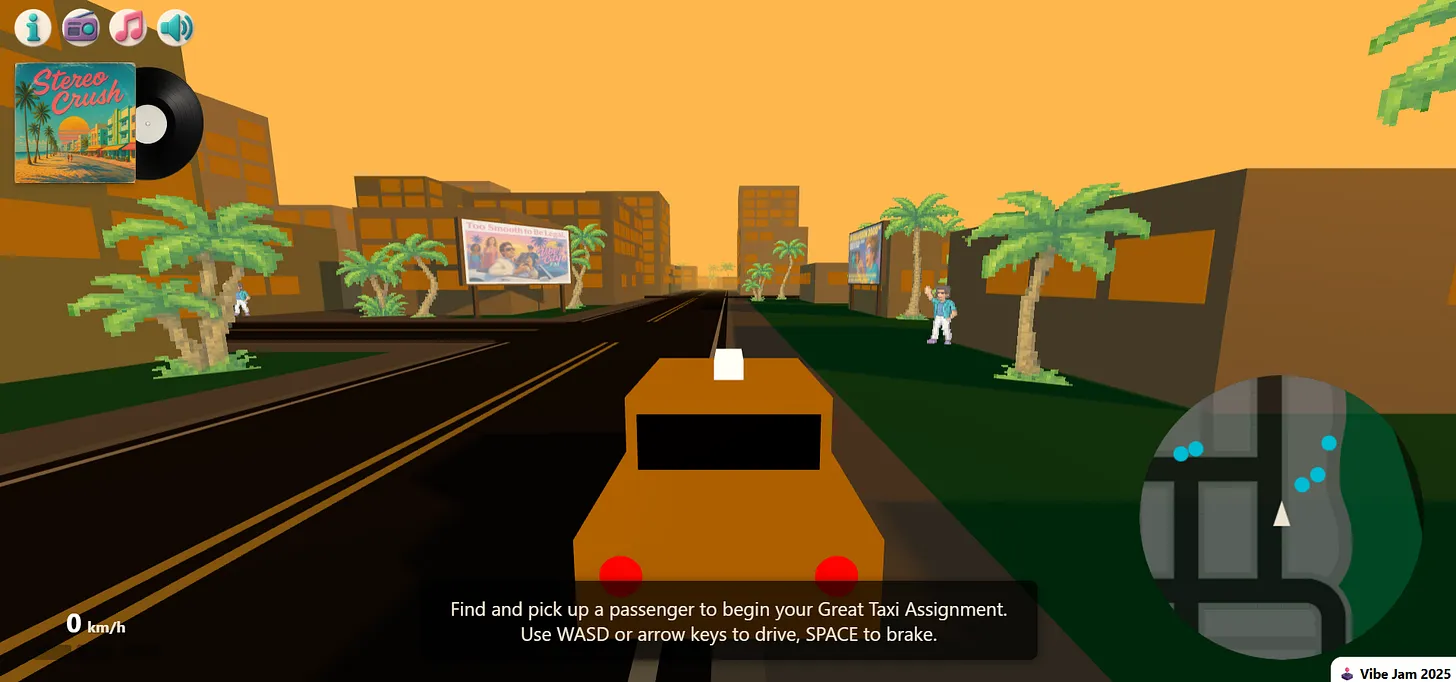
3. Healthcare and Wellness
Many healthcare and wellness tools are now being built with vibe coding. A simple prompt like “Build a symptom tracker with fever alerts and medication reminders” allows you to start developing a complete app with AI.
For example, a developer on DEV Community built the HealthLens AI tool using vibe coding, which analyzes uploaded medical reports (blood tests, X-rays, lab results) and explains them in plain English.
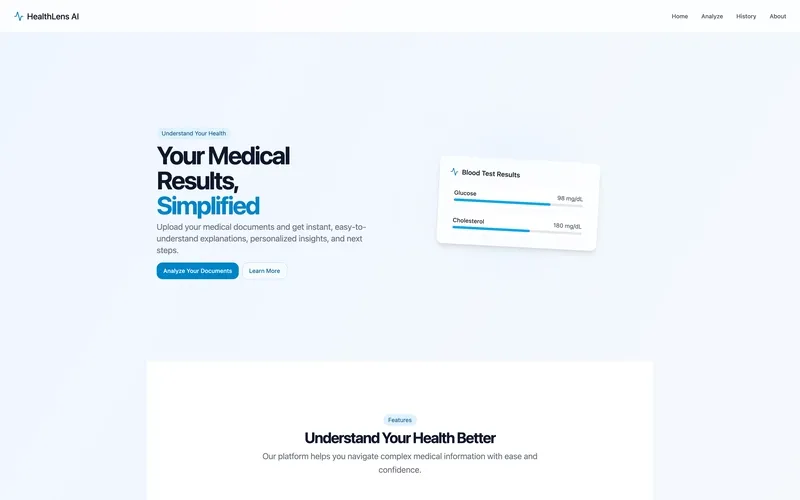
4. E-commerce and Retail
Entrepreneurs can now launch customized stores in hours without any programming skills. They describe their vision using natural language and generate the entire codebase with AI, such as “Build a Shopify-like store for handmade candles with a loyalty program, Instagram-style product carousel, and Stripe subscriptions”.
For example, a user built a comprehensive e-commerce website for a shoe brand called myFoot using Lovable and Bolt. The website included a homepage, product catalog, product details, shopping cart, payment gateways, and more.
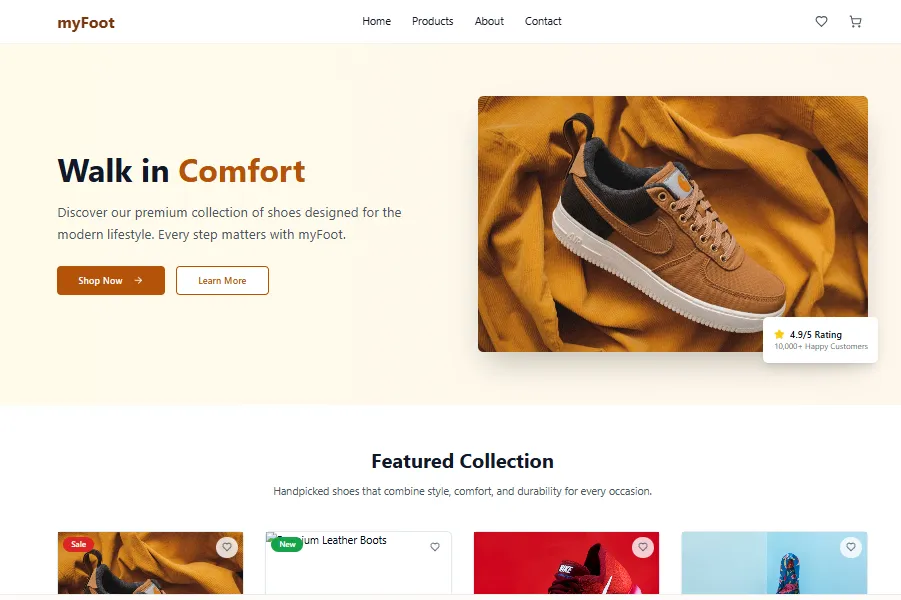
5. Business Automation
Companies are automating their workflows by describing tasks like “Generate a script to extract invoice amounts from Gmail, auto-fill QuickBooks, and Slack the CFO weekly summaries.”
For example, many businesses have used no-code platforms or vibe coding to create AI-powered chatbots that handle customer queries and order tracking. These chatbots integrate with CRM and other communication tools and reduce human workload.
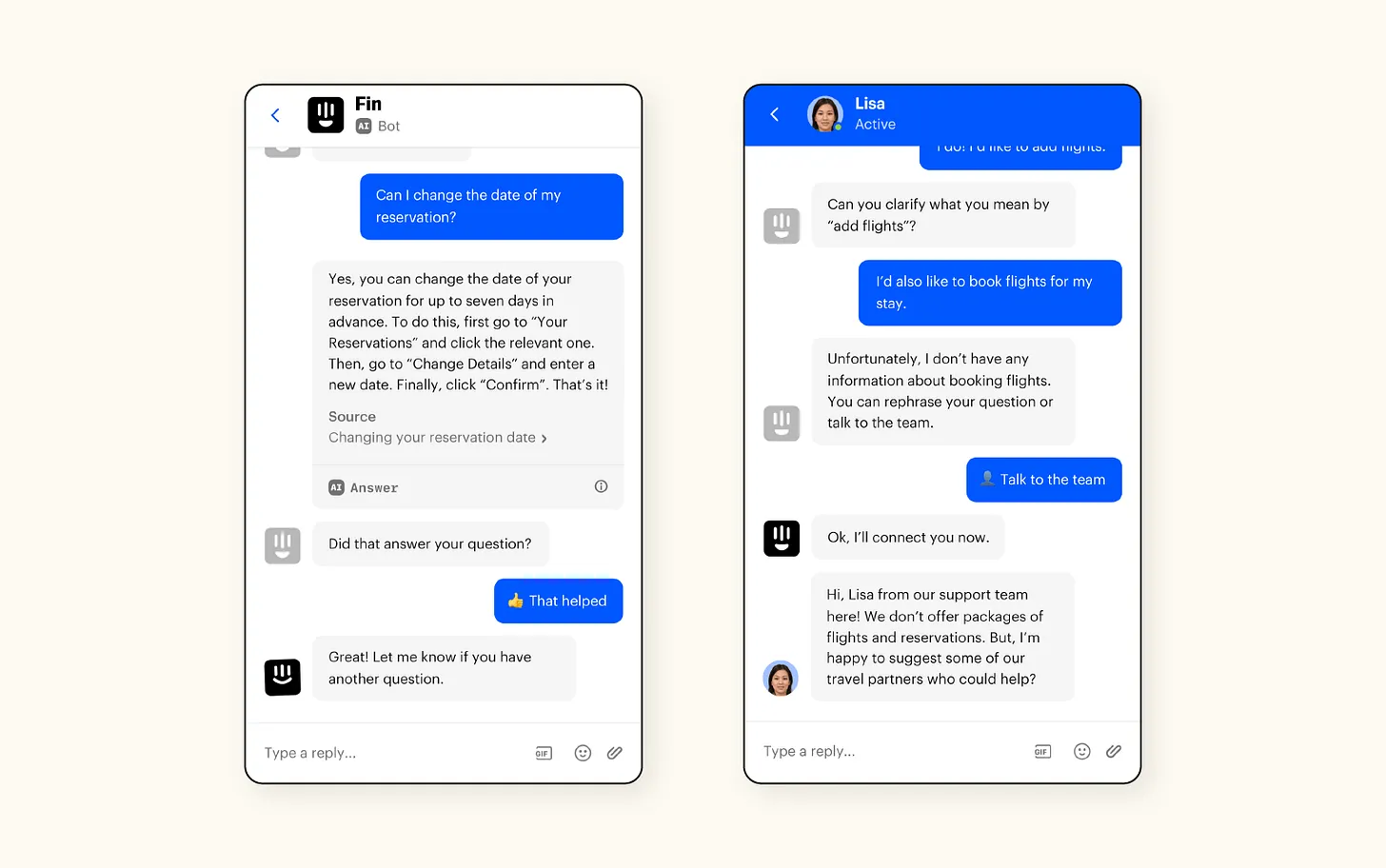
Benefits of Vibe Coding
Vibe coding offers an interactive cycle of prompt > coding > feedback, where you keep engaging with the AI to improve the output. Some key benefits of vibe coding include:
- Increased accessibility to software development without formal training.
- Faster development of software solutions.
- Enhanced the productivity of developers by letting them focus on problem-solving and system architecture.
- Generated codes are less prone to error.
- Open room for more creativity and innovation.
Overall, vibe coding eliminates the hassle of repetitive, time-consuming coding, allowing developers and non-developers to turn their ideas into functional software easily.
The Modernized Software Development Lifecycle in the Vibe Coding Era
Now that we understand what vibe coding is and have seen its real-world uses and examples, let’s turn our attention to the software development lifecycle in the vibe coding era.
First, it is important to understand that vibe coding does not change the main method of software development. Instead, it speeds up development while focusing more on planning.
To better understand, let’s examine what a typical software development lifecycle entails. It consists of six phases in an SDLC, including:
- Analysis
- Design
- Development
- Testing
- Deployment
- Maintenance
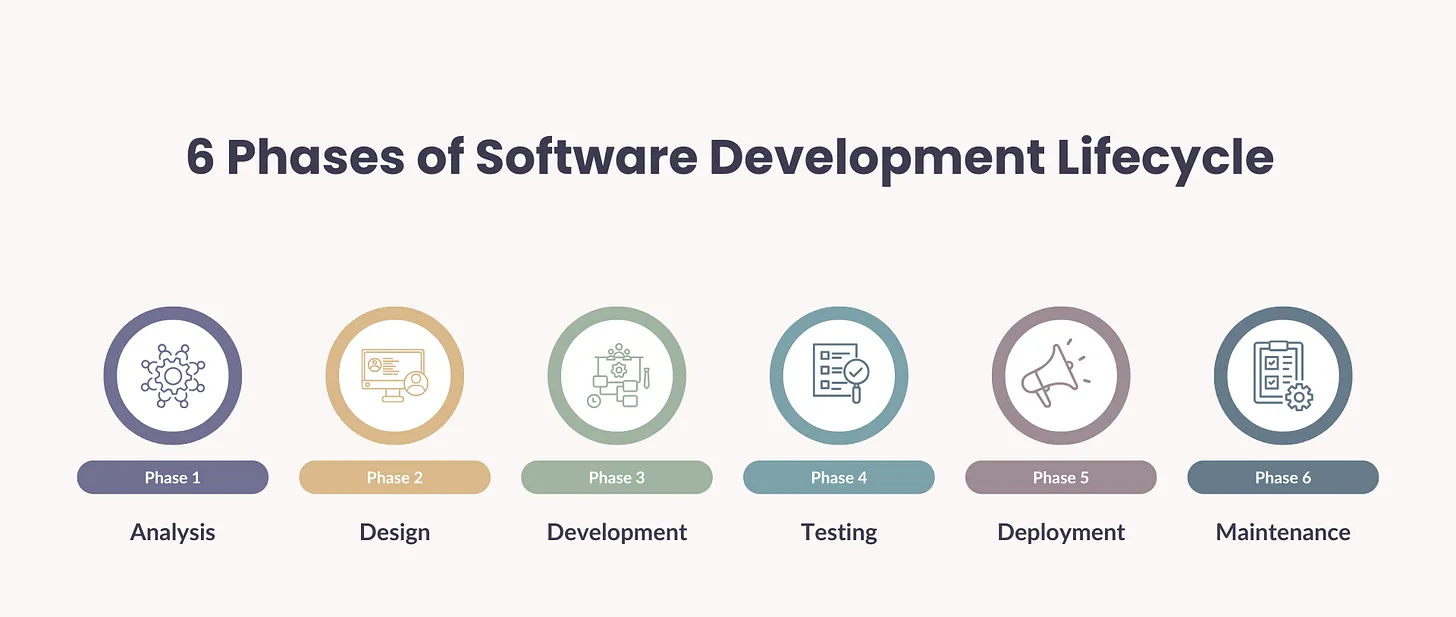
As vibe coding becomes the new standard, there is a greater focus on the Analysis and Design phases, since these are where developers’ skills are most crucial. Developers now dedicate more time and attention to clearly defining system requirements, user flows, edge cases, and expected behaviors. The quality of AI-generated code relies on the clarity of the prompt and the accuracy of the initial plan.
Regarding the Development and Testing phases, vibe coding plays a key role. Developers no longer write code line by line; instead, they generate entire modules, components, and functions using well-structured prompts. Additionally, vibe coding tools can generate unit tests, mock data, and more to decrease the time spent on manual debugging.
Lastly, the Deployment and Maintenance phases are also influenced by AI, but not exactly in a prompt-driven way. There are AI tools that help automate CI/CD pipelines, infrastructure provisioning, rollback strategies, and more. For instance, Jenkins, CircleCI, NinjaOne, Docker, Atlassian, and similar tools are popular for software deployment.
Similarly, AI maintenance tools assist in identifying bugs and tracking performance metrics. For example, Datadog, New Relic, and Dynatrace use ML to detect anomalies, send real-time alerts, and more. However, remember that human oversight remains essential during deployment and maintenance phases.
Impacts of Vibe Coding on SDLC
Vibe coding is nothing less than a revolution in software development. Y Combinator reports that more than 25% of its startups rely on AI for 95% of their code base.
The influence of vibe coding on SDLC is evident, but are all its effects entirely positive? Let’s explore both the benefits and drawbacks of vibe coding on SDLC.
Positive Impacts of Vibe Coding
Faster Prototyping: Build MVPs in hours or days instead of weeks or months.
Cost Collapse: Prototyping costs drop to nearly $0 with no need for upfront developer hires.
Democratized Development: Non-coders can create tools from scratch without depending on developers.
Focus Shift: Developers dedicate most of their time to problem-solving and planning, resulting in high-quality outcomes.
Drive Innovation: Makes it easier to test ideas.
Negative Impacts of Vibe Coding
Security Risks: Code can contain hidden vulnerabilities (48%), such as using a library with outdated or unpatched dependencies. Similarly, there are increased chances of reusing copyrighted or proprietary code (IP insecurity).
Debugging Hassle: Tracing errors in AI-generated code can take 3x longer.
Scalability Issues: AI code may not handle real-world loads or edge cases.
Technical Debt: The buildup of extensive AI-generated code results in difficult-to-refactor codebases and higher future maintenance costs.
The Future of SDLC with AI and Vibe Coding
A large proportion (76%) of professional developers are using or planning to use AI tools in their daily work. There is no denying the deep integration of AI and vibe coding into SDLC, but the main question is where this will lead.
Currently, AI technologies focus on speeding up the code development and testing phases. The aim is to decrease the number of developers and time needed to create tools and bring innovations to market faster.
For example, if we examine the case of Microsoft laying off 6000 employees (3% of the workforce), most of them were software engineers. This shows that the current trend is more about automating routine coding tasks, such as “development and testing phases,” through AI-powered tools.
Over the years, we can expect AI to become more involved in other phases of the SDLC, such as deployment and maintenance. There may be intelligent virtual developers that manage the entire development, testing, deployment, and maintenance processes with minimal human intervention.
The role of developers will shift to problem-solving and strategic decision-making. They will concentrate on designing system architecture, defining requirements, overseeing AI processes, and more. Think of them as supervisors and collaborators with AI who ensure quality and foster innovation.
Considering all that, we can say that the future of SDLC is closely tied to the collaborative efforts of developers and AI. The core methodology will stay the same, but AI and vibe coding will handle code generation and repetitive tasks. Meanwhile, developers will concentrate more on system design, user experience, critical thinking, and the ethical and secure implementation of software solutions.
Case Studies – Vibe Coding in Action
Vibe coding is happening across both developer and non-developer communities. Everyone is using natural-language prompts and AI tools to build functional software in just a few hours.
Let’s examine a few case studies of vibe coding to see how the world is utilizing this next generation of software development.
Dog‑e‑dex – Designer‑Built AI App at Block
Cynthia Chen is a product designer with no formal coding background. She built “Dog‑e‑dex”, an AI-powered dog breed identifier using vibe coding over two months. She used Replit and Anthropic’s Claude to create the app, which asks users to take a picture of a doc, identifies the breed using image recognition, and adds it to their personal collection. The app is even available in the App Store.
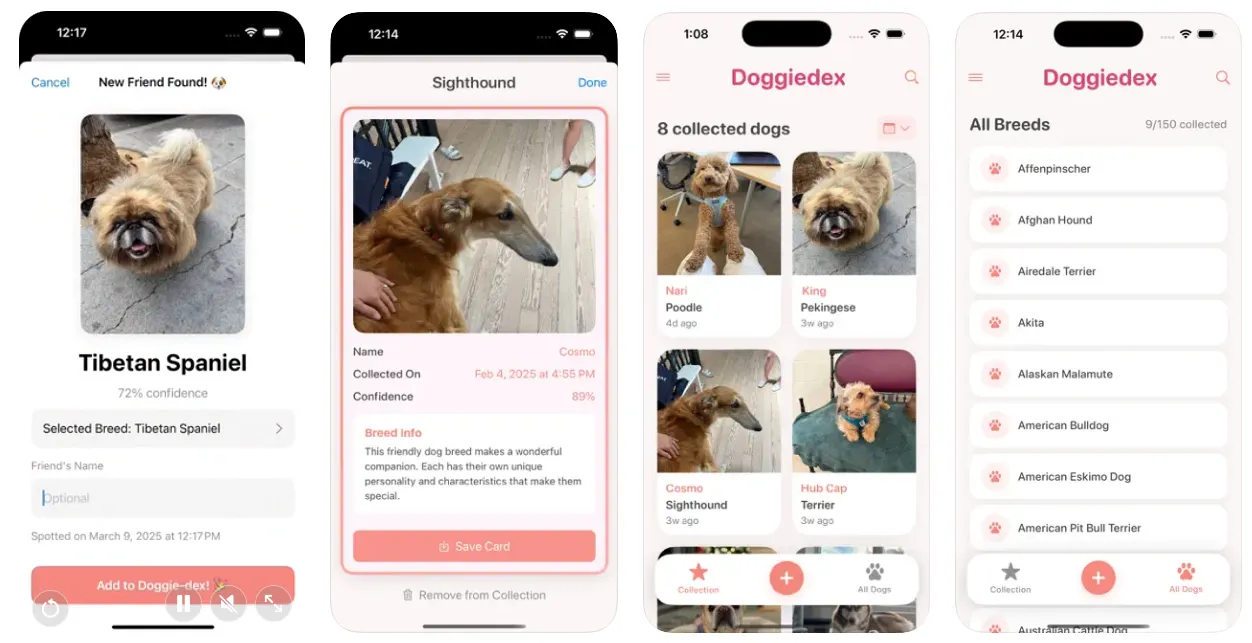
National Australia Bank & AWS Q Developer
National Australia Bank used AWS’s AI assistant Q Developer to produce about 50% of all production code from high-level prompts by developers. This co-development approach has turned Q into a “pair programmer’ and has helped developers reduce routine coding tasks.
Custom Reminders App Built with Claude
One user was frustrated with off-the-shelf note-taking and reminder apps and decided to build a personalized app using Claude 4. After explaining the requirements in a simple prompt and answering the follow-up questions, he was able to create a final product that included separate tabs, timestamped entries, search, and a shareable URL. It took him just a few hours, with no prior coding experience.
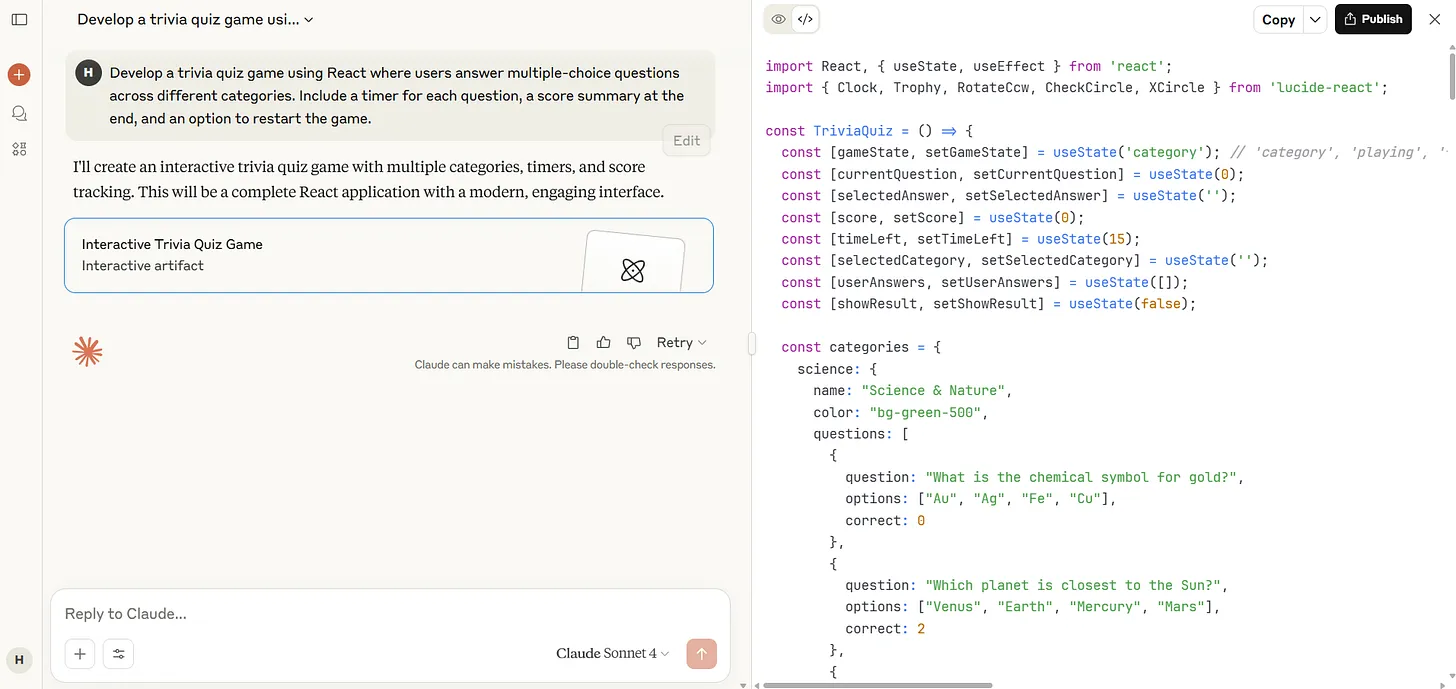
Morgan Stanley’s DevGen.AI
Morgan Stanley has created an in-house DevGen.AI tool that uses AI to convert legacy code into plain-English specifications. It is helping the organization automate the modernization of critical systems. In fact, it has saved the bank over 280,000 developer hours since it was launched.
Buddy–Daughter Builds E-Commerce Site in a Day via Bolt
A parent and daughter team built a fully operational e-commerce website (domain scrubclubsoap.com) using Bolt and Netlify in just six hours. They set up product listings, a shopping cart, and integrated Stripe for payments. Though they were not technical, they managed to refine AI-generated code with prompts to enhance usability and authenticity.

Wrapping Up
When tech giants like Google report that 25% of their new code is AI-generated, the software development lifecycle is clearly entering a transformative era.
Vibe coding is more than just a trend; it’s a fundamental shift that’s transforming how software is created and deployed. While it will preserve the core software development method, the execution stages (coding, testing, and deployment) will become faster.
Smaller teams. Shorter cycles. Smarter delivery. Now’s the time to build more with less.
Learn more about TechCon Global’s innovative approach to accelerating software development and AI integration at their upcoming events, where the future of technology is being shaped.

